 Be Inspired Blog - Arizona
Be Inspired Blog - Arizona
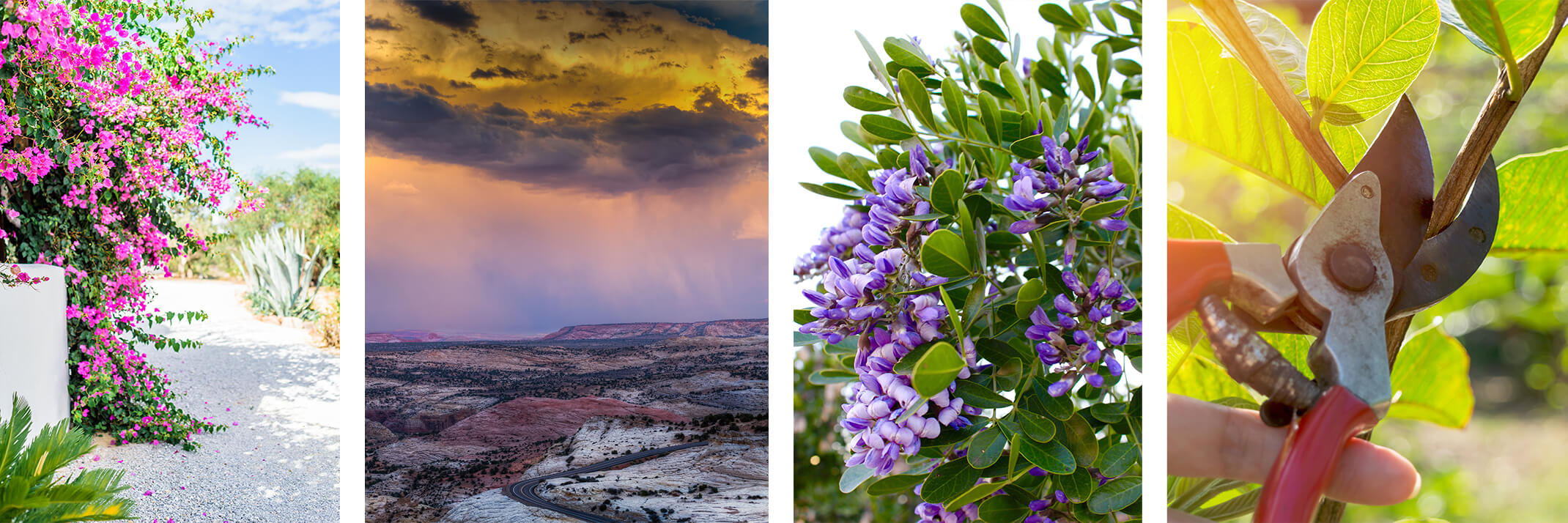
Gardening Tips for Monsoon Season
Who Says Plants Can't Thrive During an Arizona Summer?
Monsoon season in Arizona begins June 15 and ends September 30.
Common occurrences during a monsoon include high winds, dust and severe downpours resulting in flash floods. Occasionally, a severe storm includes microbursts which can cause winds of more than 100 mph and significant damage.
Following are 9 tips to help protect your garden from damage and ways you can take advantage of this stormy weather!

1. Soil Drainage
Ensure that your garden has proper soil drainage to prevent waterlogging. Excess water can lead to root rot and other plant diseases. If your soil doesn't drain well naturally, consider adding organic matter or amending it with sand or gravel.
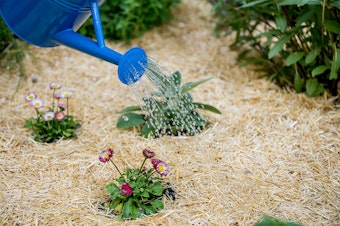
2. Mulching
Apply a layer of organic mulch, such as wood chips or straw, around your plants. Mulch helps retain moisture in the soil, reduces erosion, and prevents weed growth. It also acts as a protective barrier during heavy rains, preventing soil splashing onto plant leaves.

3. Pruning & Maintenance
Trim any dead or diseased branches from your plants before the monsoon season begins. Pruning helps improve airflow, reduces the risk of fungal infections, and prevents broken branches during storms. Regularly inspect your garden for pests and diseases, and take appropriate action promptly.
Pruning is a great way to protect your plants from damage caused by high winds. Thinned out plants are often healthier and stronger and allow winds to travel through them instead of winds running into them and causing plants to break or become uprooted.
To learn proper pruning techniques, watch our How-to Prune video or speak with a Trusted Garden Advisor at a SummerWinds Nursery near you!
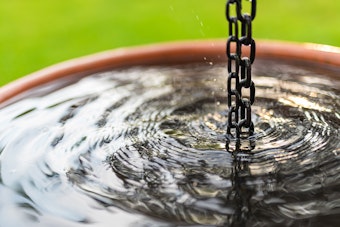
4. Rainwater Harvesting
Consider setting up a rainwater harvesting system to collect and store rainwater during the monsoon season. Rainwater is often free from chemicals found in tap water and provides essential nutrients for your plants.
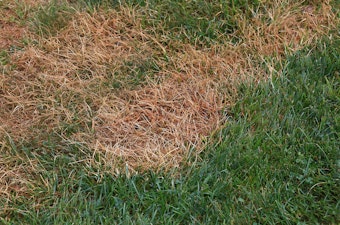
5. Pest Control
Monitor your garden regularly for pests, as they tend to proliferate during the monsoon season. Use organic pest control methods whenever possible to minimize harm to beneficial insects and the environment.
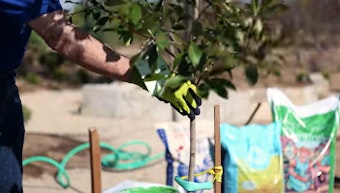
6. Stake Tall Plants & Trees
If you have tall or top-heavy plants in your garden, stake them to provide support during heavy rains and strong winds. This will help prevent them from bending, breaking, or uprooting.
Make sure any newly planted or small trees are properly staked—with two stakes so that the tree is still able to move with the wind. To learn how to properly stake your tree, watch our How-to Plant Trees & Shrubs video or speak with one of our Trusted Garden Advisors at your favorite SummerWinds store.

7. Adjust Watering Schedule
During the monsoon season, you may need to adjust your watering schedule. Check the moisture levels in the soil regularly and water only when necessary. Avoid overwatering, as excessive moisture can lead to root diseases.
8. Plant Disease-Reistant Varieties
Choose plant varieties that are resistant to common monsoon-related diseases in your area. Disease-resistant plants have a better chance of thriving during the rainy season.
Plants include:
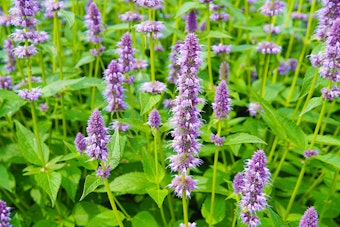 Agastache (Agastache spp.) - Also known as hyssop or hummingbird mint, is a perennial flower that attracts pollinators. It is often resistant to powdery mildew and can tolerate the wet conditions of the monsoon season.
Agastache (Agastache spp.) - Also known as hyssop or hummingbird mint, is a perennial flower that attracts pollinators. It is often resistant to powdery mildew and can tolerate the wet conditions of the monsoon season.- Desert Marigold (Baileya multiradiata) - As the name suggests, the Desert Marigold is native to arid regions and is well-suited for monsoon conditions. It has natural resistance to diseases and can handle the excess moisture.
- Gaura (Gaura spp.) - Also called butterfly bush or wand flower, is a perennial plant with delicate, airy blooms. It is often resistant to diseases and can handle the fluctuations in moisture levels during the monsoon season.
- Lantana (Lantana spp.) - A hardy perennial shrub with vibrant flower clusters. It is known for its tolerance to heat, drought, and diseases such as powdery mildew.
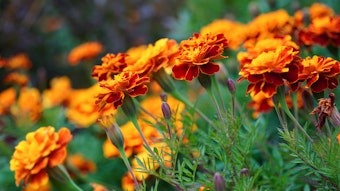 Marigolds (Tagetes spp.) - Popular annual flowers that exhibit natural resistance to various diseases, including nematodes and leaf spot.
Marigolds (Tagetes spp.) - Popular annual flowers that exhibit natural resistance to various diseases, including nematodes and leaf spot.- Cacti & Succulents - Many cacti and succulent species are well-adapted to desert-like conditions and can withstand the challenges of the monsoon season, such as excess moisture. They are generally resistant to diseases and thrive in well-drained soil.
- Salvia (Salvia spp.) - Diverse perennials known for their colorful flowers and aromatic foliage. Many varieties exhibit good disease resistance and can withstand the challenges of the monsoon season.
- Zinnias (Zinnia spp.) - Colorful annual flowers that are generally resistant to many common diseases, including powdery mildew and leaf spot.

9. Plant Heat-Loving Plants
The heat, humidity and rain that come along with Monsoons can make it easier to establish warm-weather, heat-loving plants such as:
- Adeniums
- Agaves
- Aloes
- Basil
- Bouganvillea
- Cacti & Sun-Tolerant Succulents
- Hibiscus
- Lantana
- Native Shrubs and more
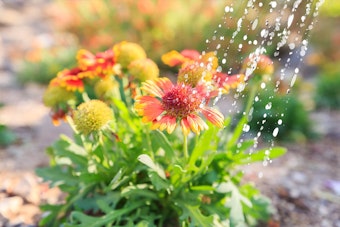
Successfully Establish Heat-Loving Plants
- Take advantage of a recent rain shower to make digging easier in preparation for planting
- Add recommended soils and amendments to help plants become established
- To help plants get established, water them every morning—regardless of expected rain in the weather forecast
- If you've recently had a heavy rain and the ground is very wet around the plants, you can skip watering that day
- Plants that have green canopies can block rainfall and may not recieve adequate water from recent rain
Visit your local SummerWinds Nursery, to see our full selection of heat-loving plants. Click the button below to access our New Plant Watering Guide for expert watering recommendations to ensure your plants grow healthy, strong roots!
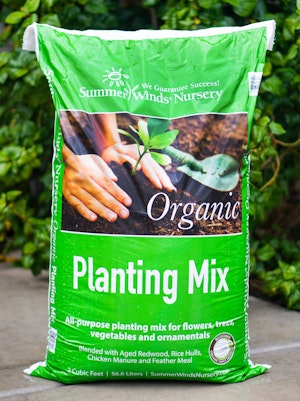
Give Your Heat-Loving Plants What they Need to Succeed
Recommended Soils & Amendments
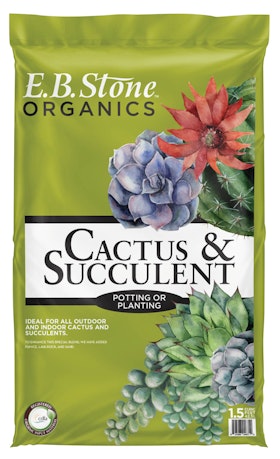
SummerWinds Planting Mix
This all-purpose natural and Organic transplanting mix is ideal for all types of flowers, vegetables and ornamentals, including annuals, perennials, ground covers, shrubs, fruit and shade trees. Now registered cdfa! Perfect for transplanting heat-loving plants!
E.B. Stone Organics Cactus & Succulent Potting or Planting
E.B. Stone Organics Cactus & Succulent Potting or Planting is an ideal potting mix for all types of indoor and outdoor cactus and succulents.
Speak with a Trusted Garden Advisor at your local SummerWinds Nursery, to learn more.

